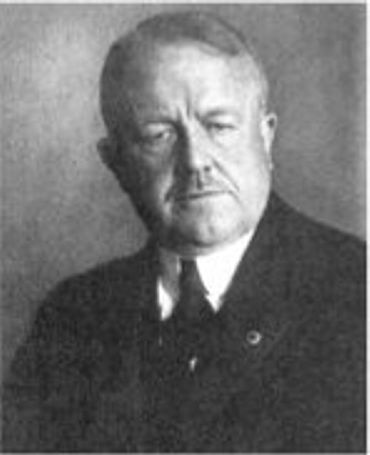How Would a “Genius in the Art of Living” Shelter In Place?
When I wrote out my 2020 reading list, I had no idea that come mid-March I’d have plenty of reading time on my hands. I had hoped that reading 20 books from the Jazz Age would be a nice escape from “real life.” Kind of like the cocktail dress I wore for our Roaring Twenties New Year’s Party—fun for the afternoon, but nothing I would want to wear every day.
Then came COVID-19. Suddenly my reading list started to feel a little too much like reality.
This threat of illness is reminiscent of the 1920’s, too. The Spanish flu had swept through the nation as recently as 1918, only coming to an end in the summer of 1919 when those infected either developed immunities or died. Summers in the twenties would have also been overshadowed by the constant threat of polio, a disease that often struck children. Polio paralyzed or killed many Americans between the 1916 outbreak until a vaccine was released in 1955. To say nothing of measles, scarlet fever, and diphtheria, all contagious diseases prevalent in the 1920s that have disappeared—or nearly so—today.
So when I began my own shelter-in-place experience on March 14, 2020, I shouldn’t have been surprised to find the familiar themes of contagion and quarantine sprinkled throughout my reading list. Two of the books I’ve read so far were actually re-reads for me: Cheaper by the Dozen and Belles on Their Toes, co-written by siblings Frank B. Gilbreth, Jr. and Ernestine Gilbreth Carey. These memoirs recount their experiences growing up in the 1910s and 20s in a family of twelve children, headed by parents and efficiency experts Frank B. Gilbreth and Dr. Lillian Moller Gilbreth.
These past few months of quarantine, “efficiency” has been one of the last things on my mind. We are fortunate: our little family has stayed healthy so far during the COVID-19 pandemic. Both my husband and I have the ability to telework. The children have almost limitless time to use their imaginations and explore. While we shelter in place, we are living what the Gilbreths might have called “unavoidable delay.”
“Unavoidable delay” is one of the Therbligs, a term coined by the Gilbreths to describe the basic units of a worker’s motions when completing a task. Frank, Jr. and Ernestine give this example in Cheaper by the Dozen:
“Suppose a man goes into a bathroom and shaves. We’ll assume that his face is all lathered and that he is ready to pick up his razor. He knows where the razor is, but first he must locate it with his eye. That is “search”, the first Therblig. His eye finds it and comes to rest—that’s “find”, the second Therblig. Third comes “select”, the process of sliding the razor prior to the fourth Therblig, “grasp”. Fifth is “transport loaded”, bringing the razor up to his face, and sixth is “position”, getting the razor set on his face. There are eleven other Therbligs—the last one is “think”!”
You can see how breaking down a complicated process by each task would be useful in a factory, where the Gilbreths often conducted their motion studies. Making even the simplest of processes simpler and easier to perform saves valuable time, allowing the workplace to be more productive and the workers less tired. What I love about the books is how the family applied these Therbligs in their home life, making the most of every minute.
In the first book, Cheaper By the Dozen, it’s the father of the family who seems to take the leading role. Frank B. Gilbreth, Sr., is portrayed as a charismatic, creative, highly-driven leader in the field of efficiency. He was the one that decided to buy victrolas for the childrens’ bathrooms so that they could listen to French and German language records while they got ready for the day. He painted models of the solar system and messages in Morse Code on the walls of the family’s summer home, keeping their minds active even while they were on vacation.
Given the general “unavoidable delay” of staying home for weeks on end, I imagine Frank Sr. would have used the opportunity to teach his children some quintessential skill. This was the Therblig I thought about the most, as the weeks of our state’s stay-at-home order turned in to months. I have to confess that I had a lot of ideas for how I could use this unexpected time at home. I could go back to baking my own bread! I could organize the craft supply closet! We could teach the kids to play piano!
Guess how many of these self-improvement projects have actually happened? None. Nada. Zilch.
And honestly, I think Lillian Gilbreth would have understood.
Although the memoirs are a funny, nostalgic read, the shadow of illness and tragedy touched the Gilbreths’ lives, too. While it isn’t directly addressed in the first book, a careful count during roll call reveals only eleven children. In Belles on Their Toes, a brief footnote explains that the second of the Gilbreth’s children, Mary, died of diphtheria at the age of five. Nevertheless, the family always referred to themselves as “the twelve,” phrasing I fully understand as a mother of three (two at home and one in heaven). It makes me wonder, too, about the scenes of illness that are recounted in the books—that time the children all caught whooping cough while traveling cross-country on a train, or when all the children needed their tonsils out. Maybe our current quarantine would have held an element of familiar anxiety for the Gilbreths, as it does for us.
The sudden loss of Frank, Sr. from heart disease marks the end of Cheaper By The Dozen, with Belles on Their Toes picking up the family’s story only days later. Lillian bravely travels overseas only days after her husband’s death to deliver lectures in his stead. It’s an important move: one that will lead to more respect for the field of motion study. She succeeds, and brilliantly. Lillian Gilbreth is now remembered as the “First Lady of Engineering.”
In Belles on Their Toes, Lillian shows us a different side of practicing efficiency. What strikes me about Lillian is her concern for the fatigue and well-being of the worker. It’s evident in how her children portray her in their books, as well as in her own published works. While her husband had excelled at creating systems that eliminated wasted time and movement, she focused on the individual performing each task.
Although large companies and factories had hired Lillian and Frank Sr. together to conduct motion studies, Lillian had to work extra hard to establish herself as a consultant in her own right after her husband’s death. She found that companies were much more willing to consider her expertise in the field of homemaking. Ironically, Lillian herself did not have much experience with cooking or housekeeping. The family employed a man named Tom, who held the role of cook, handyman, and housekeeper. Although he wasn’t an amazing chef, it was Tom and Tom alone who prepared the family’s meals. Still, since the field of home economics was where Lillian could find work as a motion study expert, that was where she went.
“If the only way to enter a man’s field was through the kitchen door, that’s the way she’d enter.”
Much of Lillian’s approach to her household and her business was like this. Lillian held a doctorate in the field of psychology. She wanted to help housewives and working mothers spend less time on chores and cooking and find more free time to explore their hobbies—time she referred to as “happiness minutes.” Her practice wasn’t only about saving time—it was about increasing satisfaction and making a more well-balanced, enjoyable life. No wonder Lillian was also called a “genius in the art of living.”
This is where I find myself applying the Therbligs in our “new normal” of sheltering in place. I did come back to my idea of organizing the craft closet, but not for the sake of housekeeping. I’m doing it because we’re using our arts and crafts supplies much more often now, and it’s easier to make time for creativity when the scrapbook paper and stamps are easy to find. As a family, we’re learning that if we do school projects early, we have more time to paint and build and sew. I’m discovering how to keep up with emails and freelance work while also finding more time to be creative with my family. We’re turning away from frantic cleaning as a way to keep anxiety at bay and towards planning purposeful ways to make the world a better place, right now, right where we are.
Maybe that is the message the Gilbreths would have for us in 2020: not to pursue the principle of efficiency, but the art of living.





